While people generally consider New York City to be very expensive (and it is!), there are many charming little "city secrets" that will cost you next to nothing, but can potentially offer much greater satisfaction. For example, did you know that a dedicated group of New Yorkers forage for edible mushrooms around Central Park and other parks in the area as well?
This past Sunday, I joined in on one of these "Mushroom Hunts" hosted by Gary Lincoff and the New York Mycological Society (NYMS). Gary Lincoff is a "legend" of mushroom foraging, and in mushroom circles, he's renowned as one of the foremost mycologists in the world, with a history of mushroom hunting spanning nearly 50 years!
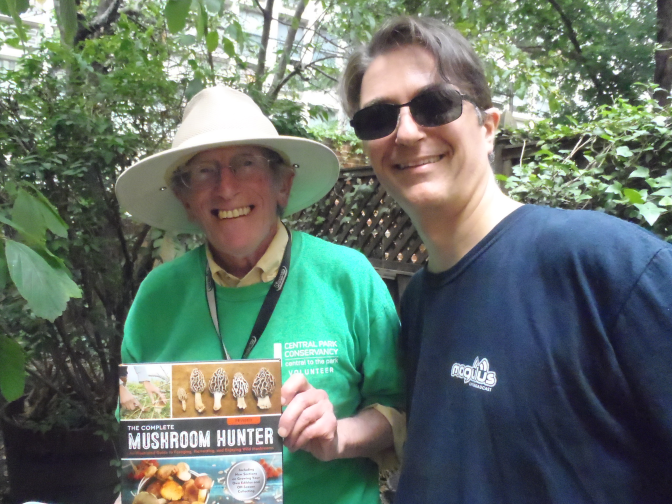
(Gary was kind enough to invite a bunch of us to his home afterwards, where we also had the pleasure of meeting his gracious wife Irene as well)
Mycology (the scientific study of fungi) is truly among one the most remarkable, and probably least appreciated fields of study on the planet. I've always been sort of fascinated by mushrooms, but my interest in them really exploded early last year when I began to understand how amazing mushrooms are, along with all their possible uses.
From some being delicious to eat, to others being poisonous as all hell, to tasting like bacon, to tasting like lobster, to supporting other plant life, to cleaning up the environment (including oil spills!), to being the largest known single living organism on the planet, to mycelium bricks to build homes, to cures and treatments that have yet to be considered by most people, mushrooms offer endless possibilities.
And although mushrooms could have dominated our environment long ago, they chose a path of integration as the better option. Instead of a “survival of the fittest” model, mushrooms often adhere to a “survival of the most symbiotic” model in order to perpetuate their existence. That's certainly another huge lesson we humans can also learn from mushrooms. I can't even contemplate how much more we might learn from mushrooms as people become increasingly fascinated and "enchanted" by their innate beauty, symmetry, and latent possibility.
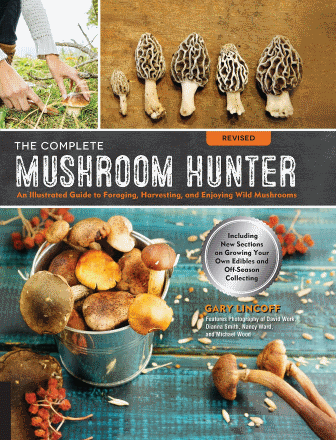
Gary, along with his signature sun hat, has traveled across the globe seeking out new and interesting mushrooms. He's been featured in several shroom-related movies and has also recently released an updated version of his book, "The Complete Mushroom Hunter, Revised: Illustrated Guide to Foraging, Harvesting, and Enjoying Wild Mushrooms".
Here's a great video interview with Gary Lincoff and the Western Pennsylvania Mushroom Club:

Gary and the NYMS also document all the mushrooms and lichens in the area. If they're really lucky, they may even come across a new species! In Central Park alone, there are currently over 500 known species of mushrooms and 25 known species of lichens. Lichens are especially interesting as well. They are composite organisms that arise from algae or cyanobacteria living in a symbiotic relationship. They can be found growing on bark, leaves, mosses, rock, walls, and even on other lichens!
Lichens are also a terrific gauge of air quality, and often cannot grow well (if at all) in heavily polluted areas. In fact, if you're thinking of moving to a new place, you might want to ask your realtor what lichens also inhabit the area. If you can't find any, you may want to consider moving elsewhere! Just look how beautiful these lichens are when magnified at over 400x:
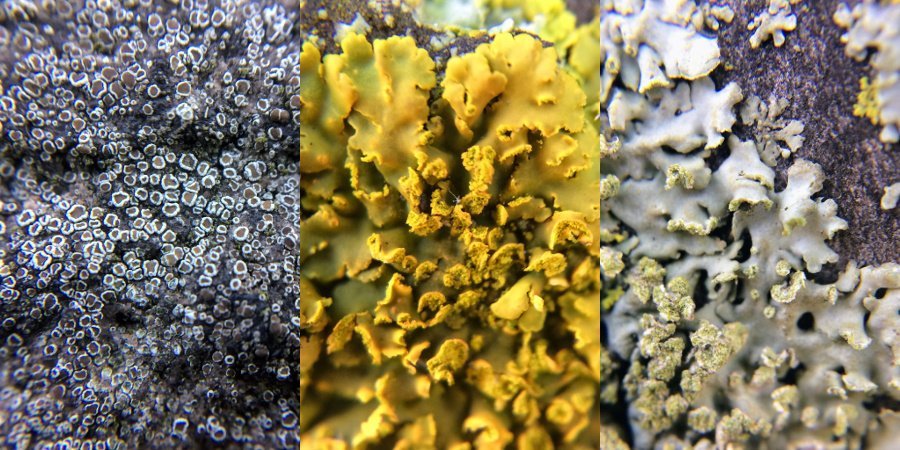
(image courtesy of Nova Patch at https://twitter.com/novapatch and http://www.inaturalist.org/people/novapatch)
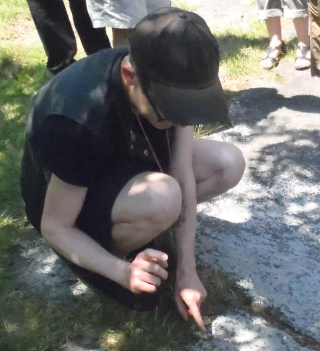
Baby Chicken of the Woods mushroom found early on during the hunt, also delicious to eat:

And how about this amazing mushroom that looks like it came right out of "Alice in Wonderland"! It's the edible Calvatia Gigantea, commonly known as the "giant puffball":
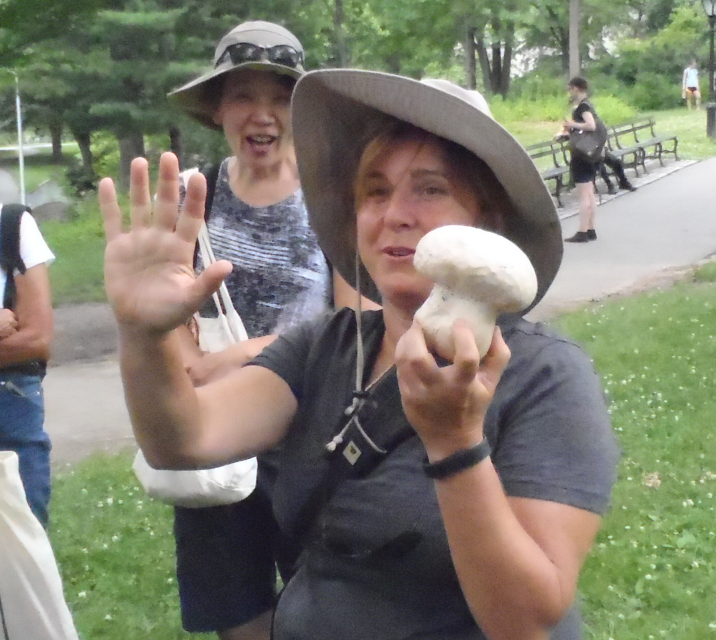
Here, Gary is holding a giant "black-staining polypore", otherwise known as Meripilus sumstinei, a species of fungus in the family Meripilaceae. This was a picture captured from last year's hunt. While Gary warned us it would be very chewy unless they are very small and young, a bunch of us still took some home to give it a try. I fried them up with a bit of salt, herbs, and butter. It was a bit scary at first seeing all the "black ink" gooing out of the mushrooms. However, it quickly subsided and a few minutes later they were done. I must also say they were quite delicious, although 15 minutes later I was still chewing, and chewing, and chewing!

DON'T TRY THIS AT HOME... LEAVE IT TO THE EXPERTS!
Now just be aware, even though many mushrooms are edible, mushroom foraging can be very dangerous for non experts. Even Gary sometimes has trouble identifying certain mushrooms without analyzing its structure under a microscope. However, with his decades of experience, he's also aware of when he's relatively certain and when he's not. While most mushrooms in Central Park are edible, there are a few poisonous ones. And although most of the inedible ones are likely to leave you with little more than some nasty cramps for a few hours, there are some that can leave you much worse off, as in liver and kidney failure two weeks later without any warning whatsoever. You also have to make sure you cook them really well, and make sure there are no other molds or fungi growing on them, or bugs that have burrowed their way in.
If you're interested in learning more, and you live in the New York area, I highly recommend you join Gary and NYMS on one of their foraging events in parks across all 5 bouroughs. For more information, visit Gary's facebook page, his website, or the New York Mycological Society's Events page.
FINALLY...
I'm also hoping that one day Gary will join us on STEEMIT as well! He's literally a walking encyclopedia and database of mycological wisdom, and his thoughts and insights would be an invaluable addition to the community. He also mentioned many mycology-related projects he would love to undertake, however he could not secure enough interest from publishers to pursue them!
I believe STEEMIT could change all that, and once again enable and empower an entirely new way of funding accelerated scientific research into one of the most fascinating fields that most know very little about.
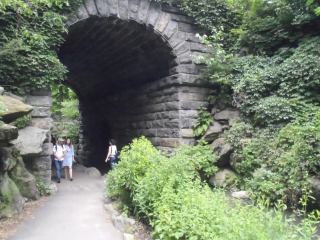
(one of the lovely stream-lined trails you may find wandering around Central Park)
One last thing... Last night, I was very pleased to discover @dber on STEEMIT! Apparently, there is a small but growing community of "shroom" enthusiasts already here, and @dber is one of those that I highly recommend you follow if you are interested in learning more about these fascinating "life forms"!
Link: @dber, The Amatuer Mycologist#3: How To Identify A Mushroom - A Workshop
Link: MycoKeys Morphing Mushroom Identifier (great tool to help identify mushrooms)
What do you think of mushrooms? Please share your thoughts in the comments below!
As always, I appreciate your upvote, your follow and all your comments!
